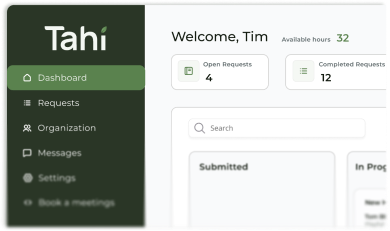Quality Assurance (QA) Testing
Quality Assurance testing is the systematic process of checking a website to ensure it is bug-free, functional, and meets the highest quality standards.
What is Quality Assurance testing in web design?
Quality Assurance or QA testing is a crucial, systematic process in web development where a website or application is thoroughly checked to ensure it meets the highest standards before it goes live. Think of it as the final, detailed inspection of a newly built house before the keys are handed over. It's not just about hunting for bugs or glitches, although that is a big part of it. True QA is about making sure everything works exactly as intended, from the smallest animation to the most complex form submission.
This process verifies that the website provides a seamless user experience, performs reliably across different environments, and successfully achieves its intended business goals. It's the proactive step that prevents frustrating user experiences, protects your brand's reputation, and ensures the digital product you launch is polished, professional, and ready for your audience.
Why is a thorough QA process crucial for a Webflow website?
While Webflow is an incredibly powerful platform for building sophisticated websites, its flexibility and power also mean there are many elements that need to work in perfect harmony. A thorough QA process is essential to guarantee that the final product is flawless. This involves rigorously testing the site's responsiveness to ensure it looks and functions beautifully on all devices, from large desktop monitors to the smallest mobile screens.
Furthermore, QA for a Webflow site involves checking all interactions and animations for smoothness, verifying that all links and buttons navigate correctly, and ensuring the Content Management System (CMS) is easy for you to use. Skipping this step can lead to a website that looks great on the surface but is plagued with small issues that erode user trust, harm your search engine rankings, and ultimately fail to convert visitors into customers. It's the difference between a good website and a great one.
What does a typical QA testing checklist for a new website include?
A comprehensive QA checklist is a methodical way to ensure no stone is left unturned. While every project is unique, a typical checklist is organised into several key areas. For functionality, we test every interactive element like forms, buttons, and navigation links to ensure they work correctly. For compatibility, we test the website across different web browsers like Chrome, Safari, and Firefox, and on various operating systems and devices to guarantee a consistent experience for all users.
Performance testing is another critical area, where we analyse page load speeds and optimise images and scripts to ensure the site is fast and efficient. We also conduct a full content review, checking for spelling and grammar errors, broken links, and missing images. Finally, we look at usability, assessing how intuitive and easy the website is to navigate from a real user's perspective. This structured approach ensures a polished and professional final product.
How does QA testing differ from User Acceptance Testing (UAT)?
It's common to hear QA and User Acceptance Testing or UAT mentioned together, but they are two distinct and equally important stages. QA testing is an internal process performed by the design and development team. Its main goal is to verify that the website has been built correctly according to the project's technical specifications and design requirements. We are essentially checking our own work against the blueprint to ensure we have built a high quality product.
User Acceptance Testing on the other hand is the final stage of testing and is performed by the client or end users. UAT aims to confirm that the website meets the business needs and provides real world value from the user's perspective. It answers the question: does this work for us? Both are vital for a successful launch. QA ensures the product is built right, while UAT ensures it's the right product for its purpose through our collaborative partnership process.
How does Tahi Studio ensure uncompromising quality in every project?
At Tahi Studio, 'Uncompromising Quality' is one of our core values, and our approach to QA testing reflects this deeply. For us, quality assurance is not a final checkbox exercise but a mindset that is woven into every stage of our process. It begins with meticulous planning and design in Figma and continues through every line of code and every interaction we build in Webflow. Our senior level team brings a wealth of experience to proactively identify potential issues before they even become problems.
Our partnership approach means we work collaboratively, ensuring that every element aligns with your business goals. By integrating QA throughout our development lifecycle, we ensure that your final website is not only visually stunning and technically sound but also reliable, scalable, and perfectly tailored to your needs. This commitment to quality is how we build digital foundations that empower your business to grow with confidence through our subscription model.






